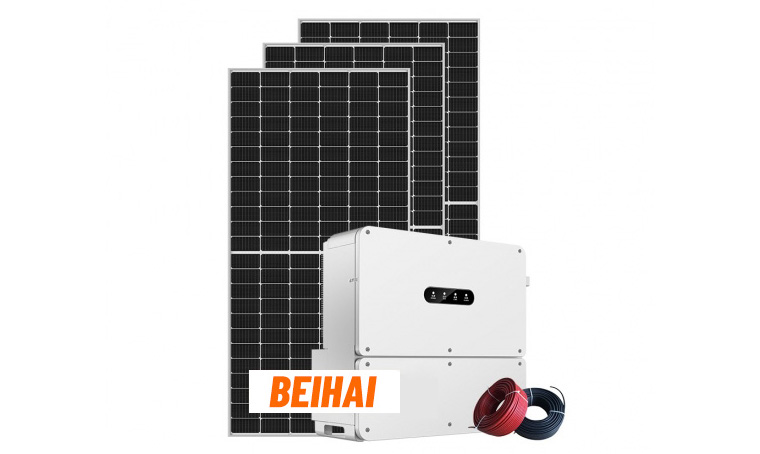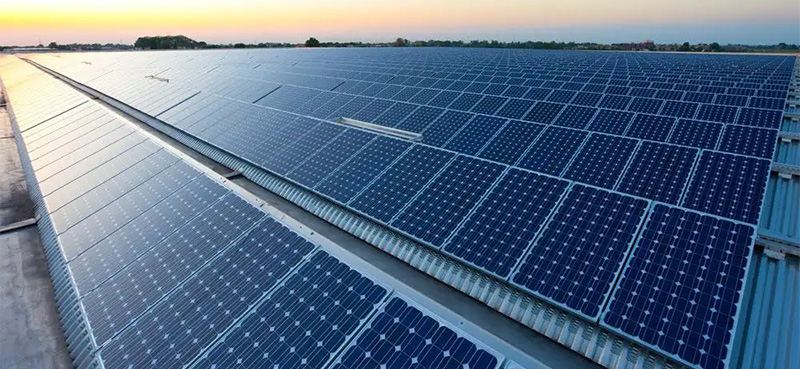The inverter is the brain and heart of the photovoltaic power generation system. In the process of solar photovoltaic power generation, the power generated by the photovoltaic array is DC power. However, many loads require AC power, and the DC power supply system has great limitations and is inconvenient to convert the voltage. , the load application range is also limited, except for special power loads, inverters are required to convert DC power into AC power. The photovoltaic inverter is the heart of the solar photovoltaic power generation system, which converts the direct current generated by the photovoltaic modules into alternating current, and transmits it to the local load or grid, and is a power electronic device with related protection functions.
The solar inverter is mainly composed of power modules, control circuit boards, circuit breakers, filters, reactors, transformers, contactors and cabinets. The production process includes electronic parts pre-processing, complete machine assembly, testing and complete machine packaging. Its development depends on the development of power electronics technology, semiconductor device technology and modern control technology.
For solar inverters, improving the conversion efficiency of power supply is an eternal topic, but when the efficiency of the system is getting higher and higher, almost close to 100%, further efficiency improvement will be accompanied by low cost performance. Therefore, how to maintain A high efficiency, but also to maintain a good price competitiveness will be an important topic at present.
Compared with efforts to improve inverter efficiency, how to improve the efficiency of the entire inverter system is gradually becoming another important issue for solar energy systems. In a solar array, when a local 2%-3% area of shadow appears, for an inverter using an MPPT function, the output power of the system at this time may even drop by about 20% when the output power is poor. In order to better adapt to the situation like this, it is a very effective method to use one-to-one MPPT or multiple MPPT control functions for single or partial solar modules.
Since the inverter system is in the state of grid-connected operation, the leakage of the system to the ground will cause serious safety problems; in addition, in order to improve the efficiency of the system, most of the solar arrays will be connected in series to form a high DC output voltage; Due to the occurrence of abnormal conditions between the electrodes, it is easy to generate a DC arc. Due to the high DC voltage, it is very difficult to extinguish the arc, and it is very easy to cause a fire. With the widespread adoption of solar inverter systems, the issue of system security will also be an important part of inverter technology.
In addition, the power system is ushering in the rapid development and popularization of smart grid technology. The grid-connection of a large number of new energy power systems such as solar energy presents new technical challenges to the stability of the smart grid system. Designing an inverter system that can be more quickly, accurately and intelligently compatible with smart grids will become a necessary condition for solar inverter systems in the future.
In general, the development of inverter technology develops with the development of power electronics technology, microelectronic technology and modern control theory. Over time, inverter technology is developing towards higher frequency, higher power, higher efficiency and smaller size.
Post time: Aug-12-2022


